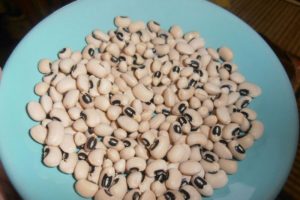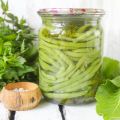How to store beans correctly at home so that bugs don't start
A tasty and healthy vegetable crop, as a rule, pleases the gardener with a rich harvest. But you can lose it if you do not read the recommendations on how to save beans so that bugs do not start at home. A particular danger is the bean weevil, which can destroy supplies in a couple of months. Even a hermetically sealed container will not save. You need to store this product according to your own rules.
How to keep beans from bugs
A small insect that starts in an unripe pod does significant damage to plantings. Pests are activated in hot weather. The larvae settle in the amount of 20-30 individuals per pod. After that, the product becomes unsuitable neither for food purposes, nor as seed. To protect the plants from infection by the seed beetle, sow intact seeds, treat the plantings with Detis or Metafox, and harvest before the pods crack.
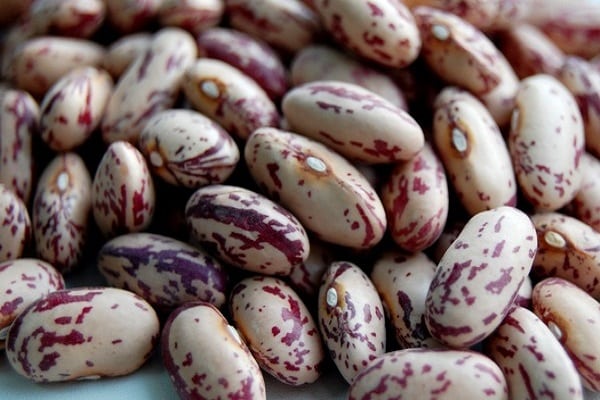
Tips to help protect beans from being hit by a bug:
- harvest in the morning, carefully cutting off the pods with scissors and supporting with your hand;
- ensure tightness of glass containers;
- carry out pre-sowing soil preparation: enrich it with nodule bacteria by introducing bacterial preparations or soil from the ridges on which the beans were grown;
- grow individual plants for seed, which will increase the quality and productivity of the crop.
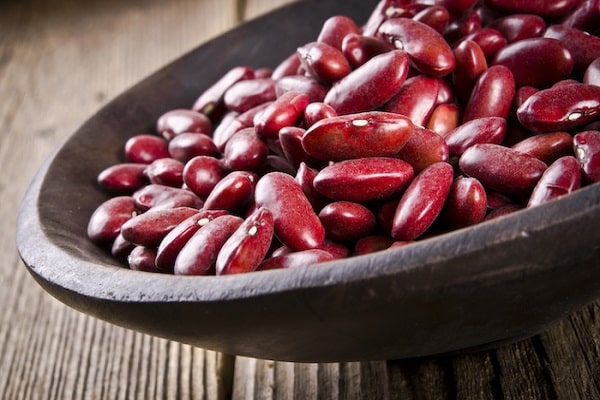
How to prepare beans for storage
To preserve most of the harvested beans for the winter, you need to pay close attention to drying, carried out in several stages:
- collect pods;
- spread out in a sunny, well-ventilated place. In urban conditions, beans are poured onto paper spread on a balcony or loggia;
- wait about two weeks until the pods turn yellow, open slightly, and the grains harden;
- warm seeds intended for human consumption in an oven at 60 degrees for half an hour;
- place the seed in the freezer for a short time.

Proper processing of the beans will protect against pests and kill the larvae.
The second option for drying: the beans are husked and spread over a dry surface, stirring occasionally.
Rules for storing beans so that bugs do not start
Home conditions are suitable for storing a rich harvest when the necessary rules are followed. Seeds can not only overwinter, but survive for several years, without damage by pests and bugs: it is important to know how:

- Sterilize glass jars, add a little ash and fill with beans. Rinse the seeds before cooking.
- Cut a few cloves of garlic and stir into the beans.
- Place large quantities of beans in boxes or boxes lined with newspapers: printing ink serves as protection against insects.
- Add a sprig of calendula, dill or rosemary, which repels bugs, to the container with beans.
Choosing containers and premises: creating optimal conditions
Dry beans are placed in an airtight container: plastic bags, glass jars or plastic containers and placed in a dark, cool place with an air temperature of no higher than +10 degrees and humidity up to 50%. To protect against kernels, the product is placed in the freezer, and in winter it is taken out to the balcony or terrace. Beans do not lose their flavor and nutritional characteristics after prolonged exposure to low temperatures.
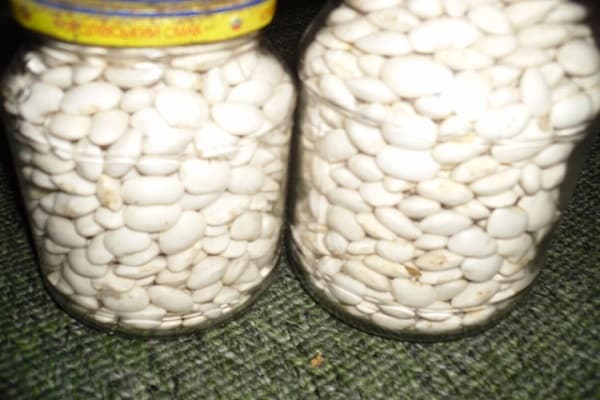
Warm and humid air encourages seed germination.
If a canvas bag is chosen for storage, it must be prepared in advance: soak in a salt solution and dry. This measure serves as a reliable protection against bugs.
Sheds, pantries and cellars with a suitable temperature regime are considered ideal places for storing beans. Loggias and cellars are allowed as temporary storage, as they do not maintain a constant temperature and humidity.
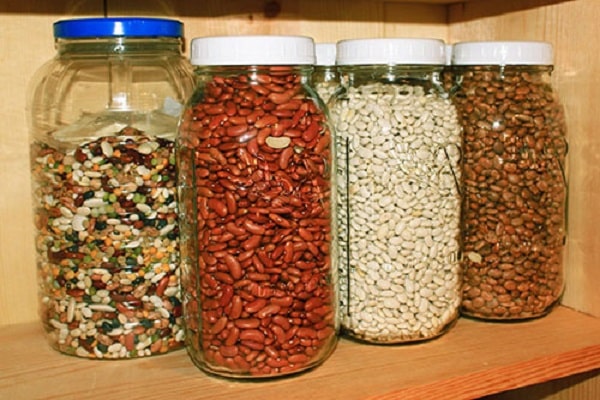
Frozen beans
Harvesting asparagus beans falls on the 14th day from the moment of flowering and continues every other day.
To preserve the pleasant taste, delicate aroma and tenderness of green beans, you will have to freeze young, freshly cut fruits for the winter. The pods are rinsed and tails and external damage are removed. It is allowed to freeze whole pods or in portions. To preserve taste and useful properties, blanching is shown: the pods are boiled for three minutes in boiling water and put in cold water with ice.
Then the product is dried with a paper or cloth towel and distributed in polyethylene bags or plastic containers, which are further stored in the refrigerator. The pre-cooked stock serves as a semi-finished product. After defrosting, the finished pods are not re-frozen.
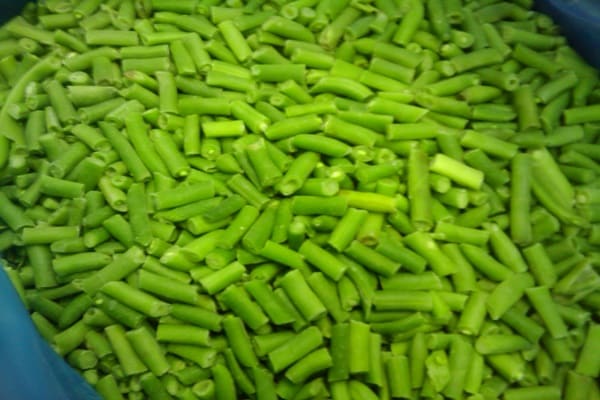
Storage at room temperature
Competently prepared, bean products are able to overwinter in the room. Some of the crop can be placed in the refrigerator, the rest of the beans are frozen for three hours in plastic bags in the freezer. After that, the seeds must be dried.
In order to get rid of bugs, the beans are cooked in an open oven at 100 degrees for 20 minutes. Containers should be sealed and located in a dry, dark, and well-ventilated place such as a kitchen cabinet or table. The ambient humidity should be low and the room temperature moderate.
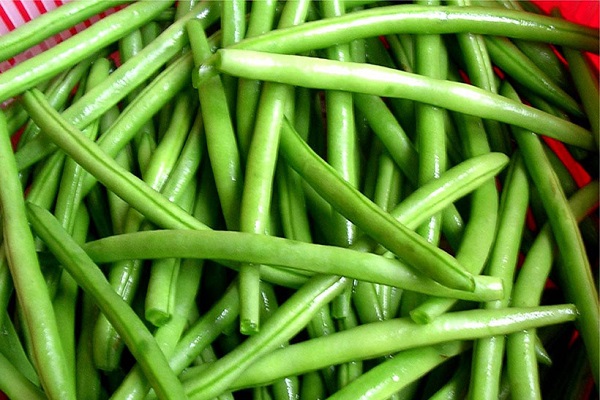
Steps to take when storing beans at home:
- rejection of fruits with black dots;
- peeling of pods;
- getting rid of seeds with bloom on the surface.
It is prohibited:
- wash the beans before placing in the container;
- use containers that can accumulate condensate;
- organize storage near a heat source.

Terms and conditions
The main requirement for the storage of this legume is maintaining a certain temperature and humidity: it is from these parameters that, to a greater extent, the shelf life of the product depends.
Other factors affect the shelf life of beans:
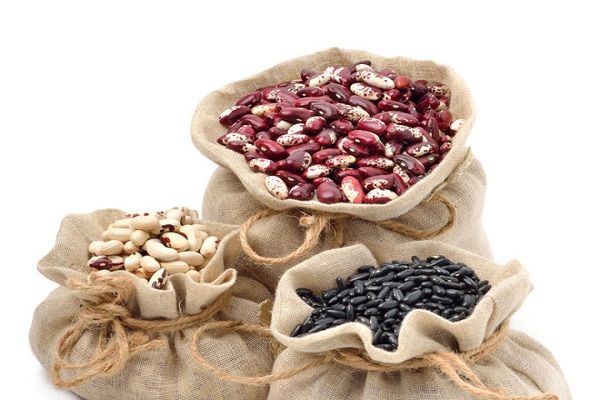
- Tara. It is preferable to use bags made of natural fabric, cardboard boxes, wooden boxes.
- Terms.Bugs reproduce in warmth, therefore, a lower temperature should be provided at the storage location, which will protect against pest damage and preserve the shell. A bean weevil lays up to two hundred eggs at a time and destroys stocks in a short period of time. Optimal temperature conditions in the room: +5 - +10 degrees. If the indicators rise higher, you need to lower them or provide the products with cool storage. High humidity (more than 50%) is unacceptable, grains become moldy, absorb the smell of dampness, and lose their presentation.
- Duration. The storage period for beans at home, so as not to start bugs, is largely determined by the container. If you follow the rules, canvas bags and wooden boxes can save legumes for two to three years. The processed product, in hermetically sealed glass jars, retains its consumer properties for up to 8 years.
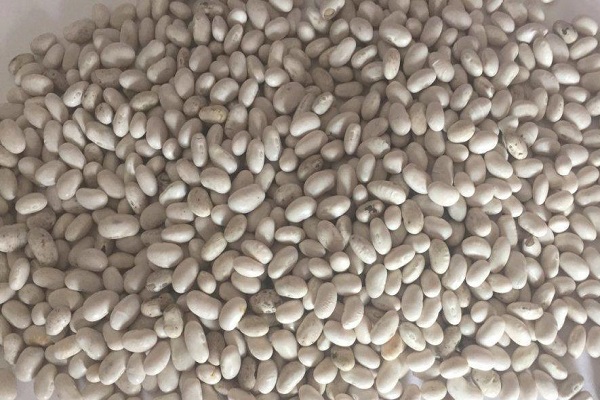
If the hostess is thinking about an alternative way to preserve the crop, with reliable protection against the appearance of insidious bugs, canning is suggested. The beans harvested in this way are suitable for consumption for two years. The blank will serve as a help for the culinary specialist, because it is used as a side dish and component of the first courses, salads or stews.
Having familiarized yourself with the rules and options for home storage, you can expand the growing area of this healthy vegetable.

